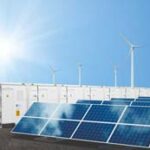
A battery energy storage system, or BESS is an efficient energy storage solution which can be used to provide renewable backup power using rechargeable secondary battery technologies. Among the many electrochemical, chemical, and physical energy storage devices currently available, the technologies that have receives the most attention are still batteries. Battery technologies for energy storage devices can be categorised on the basis of energy density, and charging and discharging capabilities
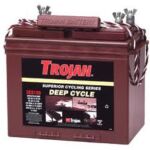
Energy storage fulfils three distinct functions of, to charge, to store and to discharge energy. An energy storage device is a device used for storing electrical energy and releasing it when required. The most commonly used for of energy storage device is the battery. Lead-acid batteries are a key component in any renewable energy storage system as an off-grid system that is not, or mostly not, connected to the utility grid requires some form of battery backup to supply the total energy needs of the complete energy system when renewables are no working
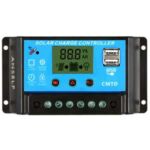
Charge controllers ensure a longer battery lifespan by preventing the connected batteries from over or under charging. Solar battery charge controllers are connected between the energy source, either photovoltaic solar panels, wind turbines, or even hydro generators and a battery bank. Connecting these renewable energy devices directly to a battery or array of batteries could result in them not being able to recharge the batteries to their full capacity or the batteries will be continually cycled between partially charged and a discharged state which will eventually destroy a lead-acid battery. Charge controllers provide a constant charging voltage preventing these battery failures
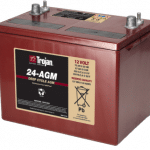
Deep cycle batteries are used to store the electrical energy generated by solar photovoltaic panels, wind energy generators and other renewable energy generating systems. As well as solar power systems, flooded cell deep cycle batteries are used in recreation vehicles for powering camper vans, RV’s or boats, to powering vehicles, carts and fork trucks. As their name suggests, deep cycle batteries are designed to deliver an amount of charge expressed in Ampere-hours (Ah) for long periods of time to a specified depth of discharge.

Understanding batteries and how we can use them in an off-grid or stand alone photovoltaic storage system is important for ensuring a long service life. Batteries convert chemical energy into electrical energy and vice versa, so deciding on what battery to use, or how many batteries you will need, depends on the power and capacity requirements of your solar energy application as well as what kind of deep-discharge and recharge cycling rate the batteries will be subjected to.
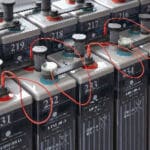
Batteries connected together in a variety of combinations can increase both storage capacity and power output compared to a single battery. When two or more batteries are connected together the resulting battery pack will have either a different voltage or a different amperage depending upon the confguration. In series connected batteries, the individual battery voltages add together to determine the battery pack voltage, while parallel connected batteries produce a battery pack capacity which is the sum of the capacities of the individual batteries

Vermicompost is the end product of vermicomposting in which the decomposition of dead plants and other organic wastes is done by earthworms to release of nutrients from them. Vermicompost is a fine peat-like material of high porosity and water holding capacity that contains many vital nutrients in different forms which can be used plants. But not all earthworms are the same as different species of earthworms have evolved differently through time so occupy different ecological niches based on their feeding and burrowing habits. Anecic and Endogeic species are commonly used for vermicomposting due in part to their high rates of consumption and digestion, natural ability to colonize organic wastes and high reproductive cycles

Deep cycle batteries are a must for any off-grid stand-alone renewable energy system if the lights are to be kept on during the night. Lead-acid batteries have been used in many different applications and uses ever since they were invented. Batteries store and convert chemical energy into electrical energy by means of an electrochemical reaction and the amount of electrical energy that a battery can supply is expressed in Ampere-hour units. Deep cycle batteries are used in renewable energy applications as the battery cells are charged and discharged regularly throughout the day. They may not provide instant power but their depth of charge, Amp-hour ratings and lifespan is greater